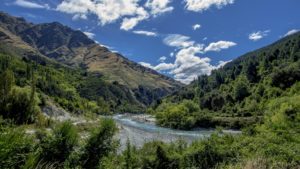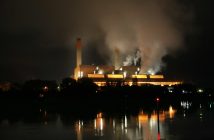A new paper by Motu Economic and Public Policy Research suggests a package of changes to improve the NZ Emissions Trading Scheme (ETS)
The proposal’s proponents believes it would deliver clear and predictable emission price signals and ensure New Zealand’s emitters reduce their greenhouse gases more quickly.

“Our proposal includes setting a fixed short-term cap on the number of units issued for auctioning and free allocation, putting safeguards in place that limit price risk, and publishing indicative trajectories for caps and price bands,” says Dr Suzi Kerr, a senior fellow at Motu and the co-leader of Motu’s ETS Dialogue initiative.
“These must be consistent with New Zealand’s targets and will guide longer-term investment.”
There is now no single “international carbon market.”
Under current rules for the 2015 Paris Agreement, only governments can buy international emission reductions from other countries.
Officials have suggested that purchasing international emission reductions to help meet New Zealand’s 2030 target could cost $3.5-7.5 billion cumulatively over 10 years. New Zealand needs to manage this investment well.
“If at some point in the future NZ ETS participants become able to purchase international emission reductions, this should be managed by government,” Kerr recommends.
“This will ensure the integrity of New Zealand’s global contribution, and allow New Zealanders – not other countries’ politicians – to choose our emission reduction pathway.”
“This proposal offers current and future governments the necessary tools to shape New Zealand’s pathway for reducing emissions, and offers emitters and low-emission investors greater certainty to help them plan for the future.”
Under the Kyoto carbon market model, New Zealand relied on the international market to drive unit supply and prices in the NZ ETS, Kerr recalls.
“The result was heavy use of low-cost overseas units with questionable integrity, and rising domestic emissions.
“Since New Zealand delinked from the Kyoto market, NZ ETS participants have had no certainty on what emission prices to expect and how to invest.
“Decision-making is paralysed by uncertainty.”
The 2015 Paris Agreement has fundamentally changed the framework for both country targets and global carbon markets, and the NZ ETS needs to change accordingly, says Catherine Leining, a Motu policy fellow, former climate change negotiator and co-leader of the ETS Dialogue.
“This package balances the interests and needs of low-emission investors, greenhouse gas emitters and government in the transition to a country that has net zero domestic emissions.”
Another important recommendation is enabling an independent body to provide expert and transparent advice to government on setting unit supply and prices.
Kerr believes the Motu proposal is “durable” in the long term and much of it is easy to adopt in line with current legislation.
“We think the best way to govern the ETS is to enable independent technical advice while the government makes the final political decisions concerning the level of ambition for emission reductions and prices.”
The proposed changes can be implemented through a combination of regulation and amendment.
Government auctioning of units under a cap could be introduced as early as 18 months from now.
“We hope the proposal attracts cross-party interest and support,” Kerr adds.
“We do not think it should be politically contentious.
“It is essentially the boring technical stuff that will provide a framework for the political decisions to come.
“We can see the merit in fast-tracking government decisions on these issues to send clear signals for low-emission investment and avoid future stranded assets.
“While the proposed changes will make the NZ ETS more effective, further government policies will be needed in both ETS and non-ETS sectors to overcome barriers to New Zealand’s low-emission transition.”
Motu led the ETS Dialogue using a unique process that allows stakeholders to work through polarising issues together, build understanding and enable creative solutions to emerge.
It does not aim to create consensus among participants, although consensus on some issues is often reached. Participants engaged in their personal capacity.
The group, which included individuals from high-emitting firms, economists, experts from consultancies and research institutions, legal practitioners, NGOs, carbon market traders, Māori business, and policy makers from central and local government, was positive about the ability of the NZ ETS to be adapted to work effectively within new global and domestic policy and market conditions.




